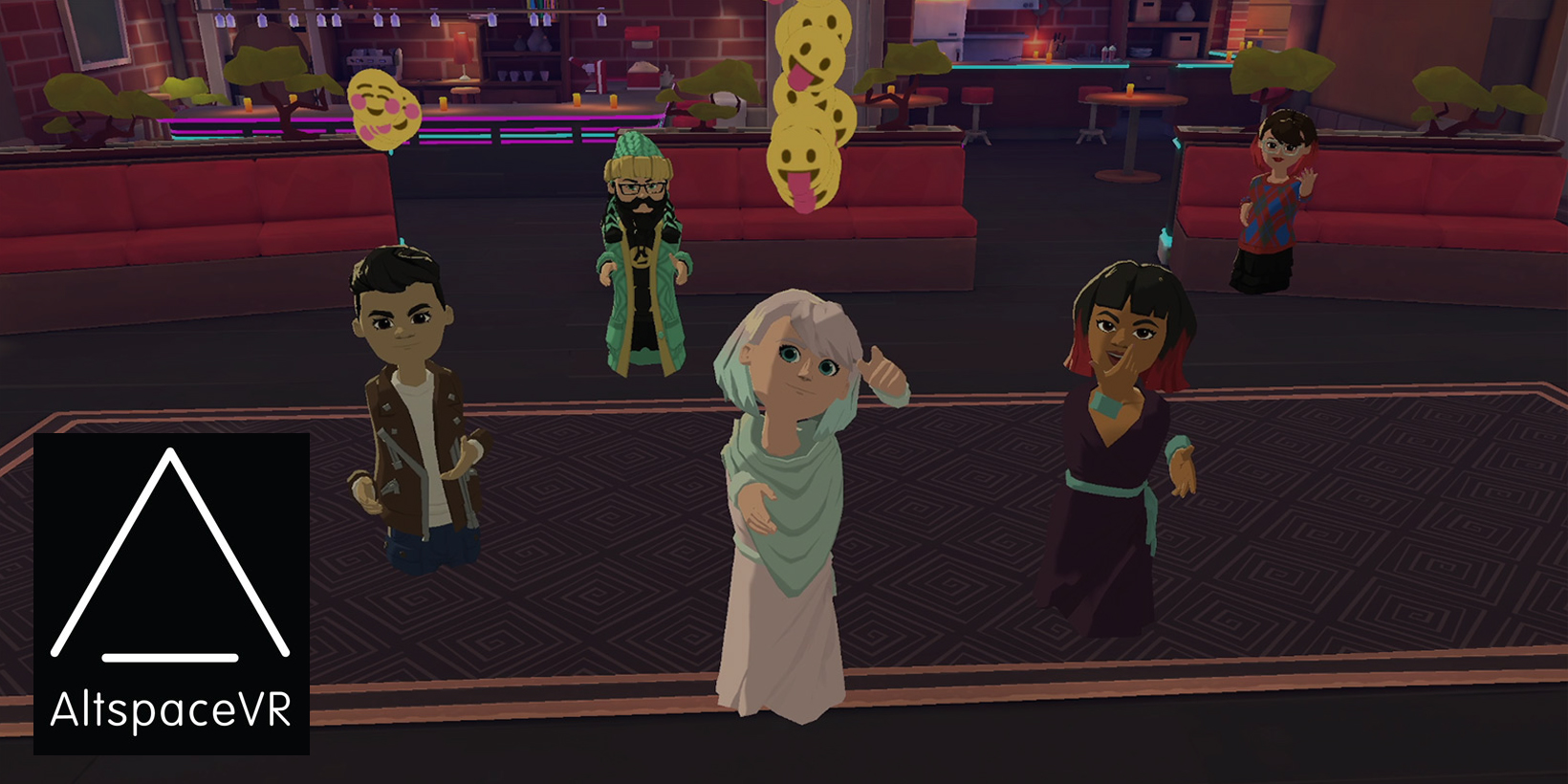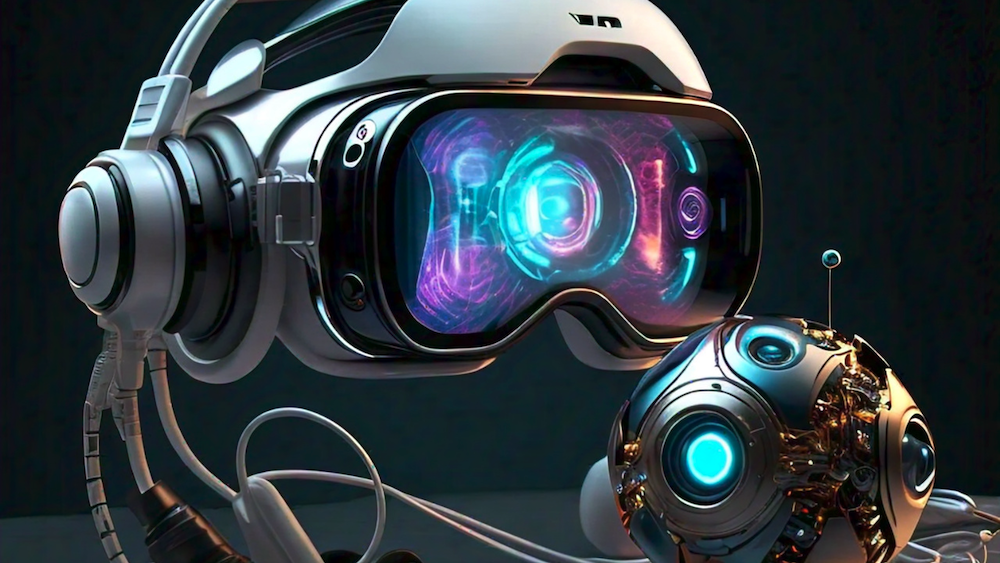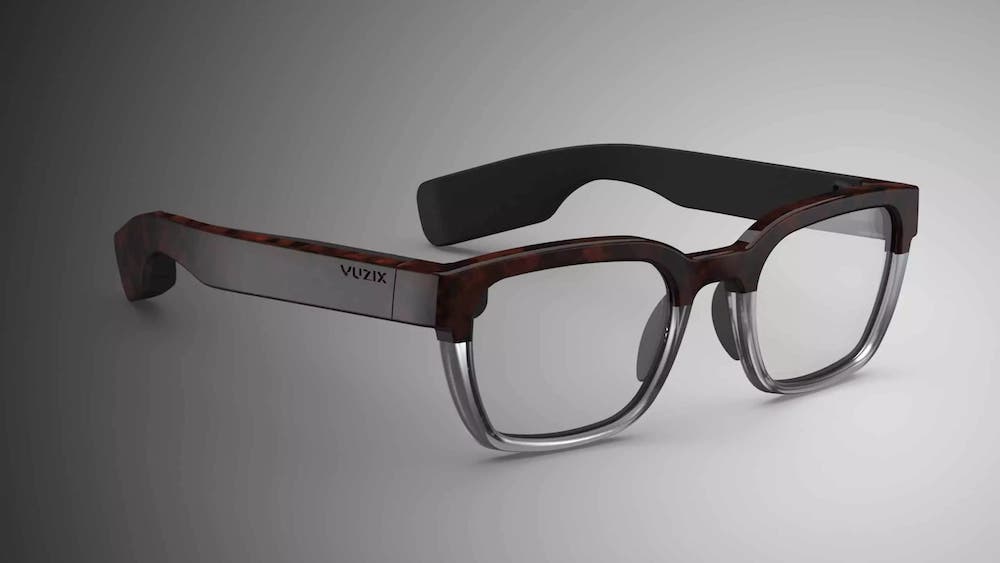If you are coming to AWE USA from afar this year, as you fly into San Francisco chances are that the flight path will take you directly over the Baylands, an area of salt flats and marshland in the San Francisco Bay area. Similarly, if you take the Amtrak train heading southbound towards San Jose, you’ll actually pass through this marshland on a train line that has been there since 1876. Flying over, or passing through via rail, you may or may not notice a series of abandoned wooden shacks, slowly sinking into the marshes.
These shacks are the remnants of what used to be the once bustling town of Drawbridge. Originally, the town started out as just a single small cabin for the operator of the railroad's two drawbridges that crossed the Coyote Creek and Mud Slough watersheds (which is also how the town got its name). However, throughout the prohibition era in the 1920’s, the town became known as a recreational destination and popular hunting and fishing spot, and also gained a reputation for gambling, bootlegging and brothels. Thousands of visitors would come every week to Drawbridge, with the town growing to include 90 buildings and two hotels across two different neighborhoods.
However, as it became more apparent that the town was slowly sinking into the marshlands, residents began to leave and visitors stopped coming. Since 1979, Drawbridge has been a ghost town. Now situated on federally-managed land, Drawbridge is actually illegal to visit, as it sits on a wildlife refuge. The closest people can get today is by taking the train, from which you’ll be able to catch a short glimpse out the window of some of the shacks that still remain.
So, what does all this have to do with a technology blog about XR? Well, firstly, Drawbridge is situated just five miles north of the Santa Clara Convention Center, which is where AWE USA events have been taking place for the last fourteen years. But in addition to that, the town has also been the focus of Rebecca Evans, an XR creator and Interactive Project Manager who has built a theatrical immersive experience about Drawbridge. The experience combines in-person character work with immersive platforms such as Mozilla Hubs, to bring a path through history that literally comes to life for audience members.
With a background in theater, as well as semiconductor technology, technical writing, UX design, project management, and a lot more, Evans has created a variety of VR theatrical experiences across other platforms – most notably in AltspaceVR. By drawing on her broad range of expertise, technical knowledge, theater skills and life experiences, Evans has been able to translate her ideas into over 200 immersive worlds that she has built in the Altspace platform, many of which are narrative driven.
According to Evans: “Theater skills help you to learn how people react to space, and how people react to characters. Having also worked for an architectural firm, I bring a depth of physical space knowledge, which coupled with my theater background has helped inform me on how to create a narrative about what a space or a character might be about. Plus, having worked with various user groups, verticals, and cultures, I have been able to pull in a range of different perspectives into my VR creations.”
AltspaceVR: the rise and fall of a platform
Founded in 2013, AltspaceVR quickly became a popular social VR platform that allowed users to create their own worlds and share them with the rest of the VR community. These user-generated virtual worlds helped to grow the Altspace community, with many regarding the platform to be a pioneer of virtual hangouts and VR socialization.
Users could chat with friends, watch videos or surf the web together, all whilst in the same shared virtual space. AltspaceVR also helped to truly lay the groundwork for the virtual events industry, with concerts, large gatherings and conferences often taking place on the platform.
The platform was acquired by Microsoft in 2017 and sat within the company’s Mixed Reality division, alongside other notable products such as Microsoft’s HoloLens and HoloLens 2 devices. However, last month amidst wider layoff announcements, Microsoft also informed the community that it would be sunsetting the AltspaceVR platform after running the platform for just under six years, with the last day of AltspaceVR’s operation set for March 10, 2023.
For Rebecca and the Altspace community, this means all the worlds that they have spent thousands of hours creating and caring for will all vanish in the very near future.
It could be argued that the writing was on the wall for AltspaceVR long before the official closure announcement from Microsoft. In fact, there were apparently subtle signs that AltspaceVR was winding things down, with once useful features like real-time translation being rolled back by Microsoft over the years. Some took this as a sign of things to come, however, many users were clearly none the wiser until Microsoft formally announced it was pulling the plug.
As a result, many in the Altspace community have already expressed their dissatisfaction at Microsoft for not communicating things sooner to them. However, the issue according to Evans is that from the very beginning, Microsoft may not have been as clear as it could have been to users with regards to ownership of worlds and the digital assets that populated them. In the end, Microsoft chose to provide no path to file migration for creators that used the platform’s built-in templates and 3D items. These were also supposed to be the ‘safest bet,’ even after a Unity URP upgrade wiped out many worlds in 2021, according to Evans.
Borrowing virtual items vs. owning them
“What’s unfortunate is that Microsoft didn’t explain to people that they are essentially borrowing virtual stuff. For example, you are given a virtual house, but it’s not yours to keep – it’s owned by someone else. Sure, this virtual borrowing is an amazing thing, but in the case of Altspace was let down by the lack of clear communication for people who may not necessarily understand that arrangement,” said Evans.
That includes both world creation templates from Altspace and numerous 3D assets from company Synty, which were built into the Altspace creation tools and yet were pulled without notice last year when Synty revised their usage agreements, Evans noted.
The impact of AltspaceVR’s closure on its user community
It is not just Evans who is feeling the loss of the AltspaceVR platform. With the platform seeing an estimated average of just over 1,000 daily active users, many of these were upset to hear the news last month, and many of them have been going through a period of grieving for the loss of thousands of worlds in which they used to interact with friends and strangers, building connections and forging friendships.
Microsoft stated in its announcement on the closure that users would be able to “download their data,” however users soon realized that downloads were only possible for a very small portion of their data, mainly limited to just messages and images. As a result, a lot of people who have been a huge part of both Altspace and the wider VR community are upset.
Some have apparently even turned to “black hat” methods for downloading their worlds and data, spawning innovation from the adversity of the platform’s closure, but also understandably causing some creators to pull their shared assets immediately, leaving users with no way to photograph their worlds without templates, floor, furniture and effects.
Evans noted: “As a creator, I’m giving myself permission to be upset, but, I’m also making a point of speaking up for people who don’t know what they will do next and who are feeling lost right now due to the loss of the platform.”
The loss of digital identity: how users and companies deal with ownership and ethics in the metaverse
For many users, it is not just virtual worlds that will be lost – user avatars will be gone as well. However, it is these avatars that have formed a massively important part of people’s online lives over the many years they have been using the platform. To some, this raises questions regarding both the interoperability of user assets throughout the metaverse, as well as one of ethics in VR and whether it is ethical of companies to decide to cease the operation of virtual worlds at such short notice.
For many users, these worlds can form an enormous part of their lives and real-world identities. Commenting on this, Evans said: “We as the industry know that is not how we should be treating people. As much as these worlds and assets were digital in nature, the experiences, memories and friendships are all very real. To many users it feels like you can’t visit your hometown anymore, it’s just been fully erased.”
The problem that guaranteeing persistent digital identities poses for the metaverse
It seems then, that the XR industry has a problem to address, particularly when it comes to ensuring that users’ digital identities can live on in the metaverse. Many key players in the metaverse space, particularly companies like Meta (but Microsoft too), are trying to convince users that a ‘digital identity’ will be an intrinsic part of the metaverse experience.
There are dozens of companies today that are solely focused on the creation of digital avatars for use in the metaverse. There are even more companies working to build their own version of a virtual world or virtual environment platform or solution. The one thing that all of these companies have in common though, is that they are all trying to get users on to their platforms.
The trouble is, not all of them can win in the end. Some will inevitably suffer the same fate that AltspaceVR has in the long run, which of course poses a question for users – how do they decide which platform to use?
With the closure of AltspaceVR, its users are now faced with the difficult question of which platform they should move to next, and whether they can trust their chosen alternative to stick around long enough, or at least make their digital identities transferable should platform closure ever occur.
For the average VR user, things like platform longevity probably don’t raise too many alarm bells, but for users who invest a large portion of their time, energy and social life into creating and enjoying virtual worlds and immersive experiences, this may now be a genuine concern.
For those users who feel a strong sense of belonging to their VR communities, their virtual and real-world lives are often inherently intertwined. For comparison, in 1978 people in the real world likely weren’t choosing to buy a house and live in Drawbridge, and understandably so, as it was a town in decline.
The problem that users have today is that the signs of decline in these metaverse platforms and virtual worlds may not be as obvious, and may only become apparent to users after it is too late.
AltspaceVR’s closure and implications for businesses entering the metaverse
So what happens if we expand outwards on some of these issues that are now being felt by the individual users of AltspaceVR and apply the same problems to the enterprise? Around the same time Microsoft announced the closure of Altspace, there were concerns raised within the XR community that the company may also be giving up on some of its more business-oriented products such as the HoloLens 2 device. The headset is of course used by businesses across the globe, including for organizations like the U.S. Army, with which Microsoft has a major mixed reality contract.
Following this speculation, the company has since reaffirmed its commitment to mixed reality, but Microsoft’s operations in the XR space have not been without their recent casualties. Reports highlighted that Microsoft’s entire Mixed Reality Toolkit (MRTK) team was let go during layoffs that affected 10,000 staff at the company.
However, in a company blog post, Microsoft shared that it remains committed to the HoloLens 2, as well as the company’s broader mixed reality program. Still, this raised questions for many in the XR industry. Not necessarily questions specific to Microsoft’s own metaverse ambitions, but with regards to many metaverse platforms, both hardware and software, currently in use by XR professionals across a range of different verticals.
For businesses, the implementation of any sort of metaverse enterprise solution can involve significant investment in both money and time, from simply purchasing enough augmented or virtual reality devices, to the time required to train staff on equipment, software and new procedures centered around XR.
With many organizations still not familiar with spatial computing technology, and industry experts not even entirely sure on what the metaverse will look like in 5-10 years from now, the implementation of enterprise metaverse technology is a decision that requires a lot of thought from business owners. Add to this the potential disruption that the discontinuation of any chosen metaverse solution would cause a company, then it simply creates more uncertainty during the decision making process and is ultimately another hurdle in the way of the widespread adoption of augmented, virtual and mixed reality technologies.
The importance of community ownership within the metaverse
Perhaps some of the lessons that are being learned from the closure of AltspaceVR can be applied to existing and future platforms, for both enterprise users and individuals looking for social VR experiences.
It would not necessarily be fair to criticize Microsoft for closing down a project that was not making money. At the end of the day, business is business, and if something is not profitable, then after a certain point, it becomes unviable to maintain and to continue. Software platforms often require lots of work to run, and employees need to be paid to maintain such platforms.
Some have even posited that Microsoft was actually doing users a favor by keeping Altspace around for as long as they did. This is still no consolation for the users that are set to lose one of their favorite social VR platforms next week, but from a business perspective the company’s decision can be entirely understood.
However, more often than not it is the case that for any business, the financial need outweighs any community need. Several technology providers are now creating their own metaverse platforms as they gear up for a future where the metaverse is expected to be a huge part of everyday life. However, the trouble is, many of these decisions are (understandably) being driven by a financial motive, as opposed to a wider community benefit.
Commenting on this, Evans stated: “What might just be considered a business decision to a company, can be a very real, raw and emotional loss for people. There are people who feel safe in AltspaceVR, with some disabled users telling me that the platform is the only place they don’t get bullied.”
Much of the messaging from many companies aiming to entice users onto their various platforms is all about “gathering,” “community,” “socialization,” “virtual connections,” and a number of other community-oriented slogans. However, as users choose to invest their time (and oftentimes money) building up their digital identities in these platforms, perhaps it should be the responsibility of those working in the XR industry to consider the very real social and human impact that their virtual platforms may have on people.
Drawbridge as a cautionary metaphor for the metaverse
With the town of Drawbridge, there were many layers that added to its once thriving past. Different generations of different people, each with different needs, wants and desires passed through the town back in its heyday. From all these differences came a variety of services and solutions. However, at its very foundation, the town was destined to sink.
But just as Drawbridge came about to meet the needs of its visitors, the metaverse will too do the same thing. From the software platforms that will power experiences, to hardware devices that will enable users to access these experiences, each individual function of the metaverse will likely be closely intertwined with one another.
Perhaps not through design though, but through necessity. Whether to meet the cultural, financial or social needs of an ever evolving world, the metaverse will inevitably consist of many layers, each built by a variety of different providers, from large businesses to small creators.
However, from the outset of its creation, it is important to ensure that the metaverse is built on solid foundations. It could be argued that it is the duty of the architects of the metaverse to ensure that their platforms and experiences are built to last in order to protect users from the impact that any potential closure or failure of any aspect of the metaverse could have on people.
Otherwise, just as Drawbridge started to slowly sink into the marshlands until it became a deserted ghost town, the metaverse could suffer a similar fate unless the users and communities that will populate it are given more consideration.
What’s next for the users of AltspaceVR?
For AltspaceVR, sadly it has not been able to avoid turning into a collection of abandoned virtual worlds. For the many users of the platform, there is a sense of loss, which will likely only grow as the platform finally ceases to exist next week. The sentiment of many users now is to pick up what pieces they can of the digital lives that they built in the platform and find a new virtual place in which to settle and start again.
For Evans, she's enjoying the final moments and working on her immersive experiences in AltspaceVR until March 10th, including filming her Sandglass show sets. Her work in VR theater is also a part of XR Live, which showcases a range of live immersive performances. With 11 groups currently participating, Evans has been leading a series of Altspace tours, which have also been filmed for a possible documentary on Altspace. Each tour features a different Sci-Fi theme and allows users to navigate from Evans’ AltspaceVR world, which features nearly 300 portals to works by amazing world builders.
However after March 10th, they will be no more.
Altspace members have already begun porting their Unity-based content to various platforms to keep it alive even after the March 10th shutdown. There are many options that have been around for years, such as Mozilla Hubs, VRChat, Spatial, RecRoom, Engage, FrameVR, Meta’s Horizon Worlds, Sansar, Somnium Space, and NeosVR. They all offer a variety of capabilities that will draw Altspace users for different reasons, from world building to events. With new platforms popping up constantly, it’s a challenge for users to tell them apart.
However, one constant according to Evans is that everyone wants to be able to fly like they could in Altspace. Evans added that there is now a hum of activity on various new Discord and Facebook groups, with cross-platform meetups occurring daily.
One such platform that has caught the attention of the community throughout this recent period of replacement-finding activity is ‘Banter’. Built by Shane Harris, the CEO & Co Founder of SideQuest, Banter is a new social VR platform built for an adult audience that is available to Quest users from Meta’s App Lab. Users can hang out with others in virtual environments using full body Ready Player Me avatars. According to Evans, Harris is well-known to long term Altspace users after he created “Shane’s Editor,” which became a popular Altspace World Editor that many utilized to create and add to their worlds.
Built with Unity3D, Banter helps to address some of the barriers to entry for VR users, according to Harris. For now, it seems that it is the platform of choice for many AltspaceVR users, many of whom are likely hoping that it doesn’t go the same way that Altspace has gone. You can find out more about Banter on the project’s discord channel.
In a way, the closure of Altspace could be seen as a positive, in that from the disappointment of its departure comes the opportunity for new innovation and the arrival of new platforms to fill the void that Altspace has left. Similarly, there is a belief for many in the XR industry that amidst a current landscape of tech industry layoffs and cutbacks, new seeds of inspiration will have the chance to grow now that thousands of XR professionals may have just been presented with the best opportunity to start that AR or VR project that they had been putting off.
Only time will tell, but as AltspaceVR sinks into the marsh, it cannot be denied that it has played an important part in laying some of the foundations for social VR experiences, and with its closure, may have created fertile ground on which new metaverse experiences can be built in the future.



